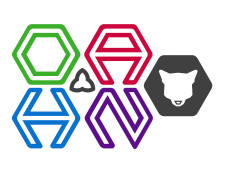OAHN Wildlife Project: Botulism Test Development

Project Leads: Claire Jardine, Alex Reid, Durda Slavic
Collaborators: Sarah Lippert, Lenny Shirose, Brian Stevens
Executive Summary
The main objective of this project was to validate multiplex qPCR tests for detection of botulism toxin genes and assess the performance of the test using CWHC diagnostic samples. The AHL set-up and verified a PCR-based detection assay for the 6 C. botulinum toxin types A, B, C, D, E, and F and the CWHC used the tests on a total of 18 separate cases in 2023 and 2024. Most of the CWHC cases were connected to waterfowl mortality events, but occasional individual animals were also tested. We have had 4 separate cases test positive for botulism in regions where an outbreak was suspected. One was a mallard from Windsor during August 2023. Multiple mallard ducks were reported to have paralysis or head bobbing upon examination by a wildlife custodian. These ducks were tested for botulism and the PCR was positive for the type C toxin gene, which is consistent with the time of year and species affected. In 2024, there was a large waterfowl mortality event on Georgian Bay, which began in the middle of August but peaked in late September and into October. During this event, we had 2 lesser grebes from the middle of August test positive for the type E toxin gene and an additional group of long-tailed ducks from the middle of October also test positive for the type E toxin gene. These results helped to support our diagnosis of a type E botulism outbreak affecting diving ducks on Georgian Bay during the late summer and fall of 2024. This development of this test by the AHL has filled an important gap, providing a PCR-based detection assay for botulism toxin genes, that is now commercially available for veterinarians across Canada.

